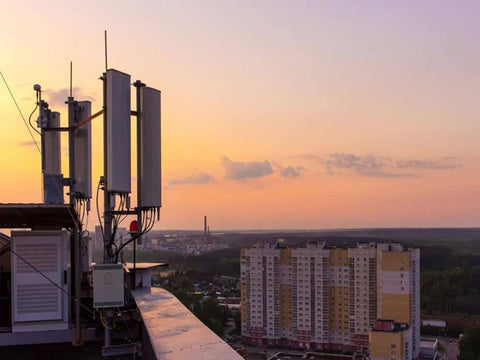Remote Radio Head, an Integrated Radio Frequency (RF) Unit
May 30, 2016

At the base of a cellular tower there is a climate controlled shelter six feet tall where the base transceiver station (BTS) equipment is housed. The BTS enables wireless communication between the cellular network and mobile user. The BTS on the ground is connected to antennas on the top of the tower with coaxial cable. This architecture has not changed in decades. It was however time for alternatives due to efficiency and costs starting to become increasingly important to wireless operators.
One such alternative solution is a base station that is distributed. In this configuration, most of the base station equipment is in an enclosure near the antennas at the top of the tower and is no longer situated in the shelter. This radio frequency (RF) unit is integrated but separate, and it known as a remote radio head or remote radio unit. It is quite compact, measuring no more than 2' x 1'6".
This remote radio head is connected to the digital main part of the base station with a fiber optic link. This provides a high level of flexibility in the construction of cell site, increases the efficiency of the system and reduces losses in the coaxial feed line. Although remote radio heads have a number of advantages, they introduce complexity due to the vast number of components needed to build the unit.
As radio heads are located at the top of the tower where environmental conditions are harsh, an important challenge is to withstand these conditions. Optimal performance is another critical point due to access to the tower top being difficult and expensive should replacement or repairs be required.
Any comments? Please post them below for other readers to read. Thank you.
Share this post
4 comments


This blog reminds me of how many skyscrapers have different radio equipment on their roofs. How do they endure the elements including high winds, lightning, or things like extreme cold or heat? This article provides some information, but I would like to learn more.
Not being snarky but the only radiohead I know is the band, Radiohead. This blog filled me in on remote radio unit functions and more to the point, gave me a starting point so I can look into remote radio head architecture and remote radio head specifications. Are there any key remote radio head manufacturers in the industry?
What kind of loss are you looking at with coaxial cables? Also, what kind of cables, cords, etc. are used in cell phone boosters for home and car use? Also, are there any premium brands of cables and cords for cell phone boosters. I’m just trying to get an idea as I’m getting one to make my cell phone work better and I want to make everything work well.